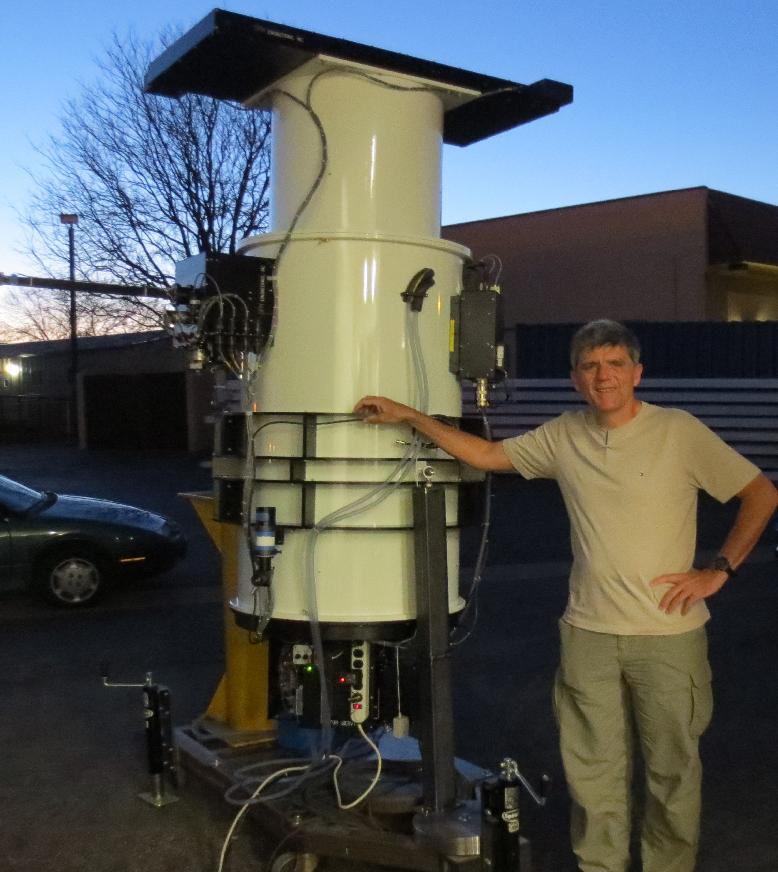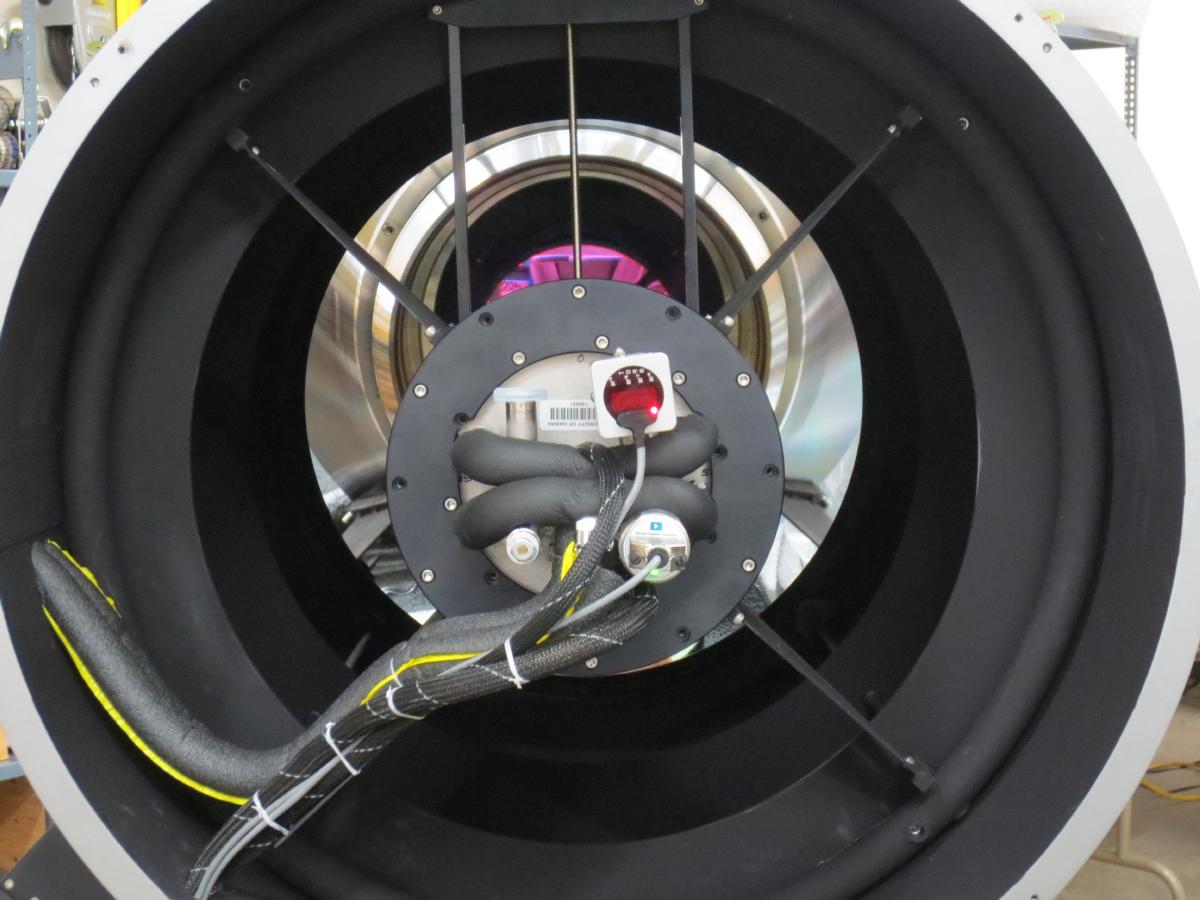
Asteroid Early-Warning System for Potential Impacts Makes Progress

Scientists working to help safeguard the Earth from potential asteroid strikes are moving forward with a novel Asteroid Terrestrial-impact Last Alert System, or ATLAS, to provide advance warning of potentially dangerous space rocks.
The ATLAS project is an asteroid impact early-warning system being developed by the University of Hawaii and funded by NASA. The project is dedicated to providing a one-day warning in the event of a potential 30-kiloton "town killer" asteroid strike; a week's warning for a 5-megaton "city killer"; and three weeks' notice for a potential 100-megaton "county killer" impact.
"We have First Light," according to an ATLAS team update. In a Colorado-based test at the end of March, the Acam1 camera and ATLAS 1 telescope were tested at DFM Engineering, Inc. in Longmont, Colorado. [Photos of Potentially Dangerous Asteroids]
ATLAS sites
The ATLAS asteroid project is led by John Tonry of the Institute for Astronomy in Honolulu, Hawaii, with the work funded by a five-year NASA grant that began Jan. 1, 2013. The project's Haleakala and Mauna Loa sites are complete and ready for the installation of the DFM Engineering-completed ATLAS telescopes.
Each site has a fully certified 16.5-foot Ash dome, concrete pier, loft, storage, computers and essential electronics. Full robotic operation of both telescopes, including automatic reporting to the Minor Planet Center by early 2016 is the plan.
Telescope construction is progressing steadily with ATLAS officials expecting delivery and installation of ATLAS 1 on Haleakala at the end of April and ATLAS 2 somewhat later. In addition, there are ongoing discussions with NASA about a third ATLAS telescope in South Africa, which could prove an excellent location for early detection of dangerous asteroids.

Moving objects
When ATLAS is completed at year's end, it will consist of two telescopes located 100 miles (160 kilometers) apart that will automatically scan the whole sky several times every night looking for moving objects.
Get the Space.com Newsletter
Breaking space news, the latest updates on rocket launches, skywatching events and more!
The key to detecting asteroids is that they continuously move against the more or less fixed background of stars and galaxies. A typical asteroid moves something like 30 seconds of arc an hour. ATLAS will therefore record pairs of images of each part of the sky, with exposures separated by about 30 minutes.
The computer system for ATLAS is capable of analyzing 500 megabytes of data per minute, capable of making a detailed comparison of the two images immediately after the second one is taken.
The computer will then compile a list of all objects that appear to have changed either their positions in the sky or their brightness. The next step is working out which of these objects is likely to be an asteroid moving across the sky, and which may be some other celestial phenomenon.
Science agenda
ATLAS will be capable of conducting an array of science pursuits, beyond searching for dangerous asteroids, such as:
- Search for habitable planets outside our solar system
- Search for mini-moons that orbit Earth
- Look for denizens of the outer solar system, such as dwarf planets like Pluto or Eris or a Nemesis star.
Also on the ATLAS "can do" list is the ability to track space junk.
ATLAS can see a 10 cm-diameter (about 4 inches) object in low Earth orbit and detect objects of about 60 cm-diameter (about 2 feet) in geostationary Earth orbit. Because ATLAS watches how things move, it can quickly distinguish Earth-orbiting space junk from asteroids that orbit the Sun.
For an informative set of videos on the ATLAS, visit: http://www.fallingstar.com/videolist.php
Leonard David has been reporting on the space industry for more than five decades. He is former director of research for the National Commission on Space and is co-author of Buzz Aldrin's 2013 book "Mission to Mars – My Vision for Space Exploration," published by National Geographic, with a new updated paperback version to be released in May. Follow us @Spacedotcom, Facebook or Google+. Published on Space.com.
Join our Space Forums to keep talking space on the latest missions, night sky and more! And if you have a news tip, correction or comment, let us know at: community@space.com.

Leonard David is an award-winning space journalist who has been reporting on space activities for more than 50 years. Currently writing as Space.com's Space Insider Columnist among his other projects, Leonard has authored numerous books on space exploration, Mars missions and more, with his latest being "Moon Rush: The New Space Race" published in 2019 by National Geographic. He also wrote "Mars: Our Future on the Red Planet" released in 2016 by National Geographic. Leonard has served as a correspondent for SpaceNews, Scientific American and Aerospace America for the AIAA. He has received many awards, including the first Ordway Award for Sustained Excellence in Spaceflight History in 2015 at the AAS Wernher von Braun Memorial Symposium. You can find out Leonard's latest project at his website and on Twitter.









